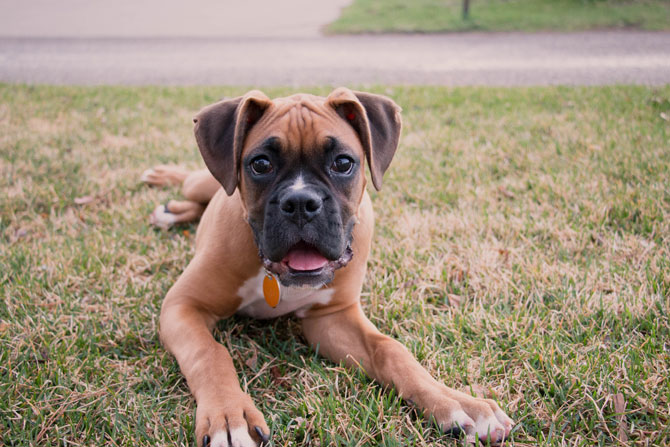From yawning and lip licking to wagging tails and placing a wet nose in your lap, there is a lot to be learnt from a dog’s body language.
Sure, there are certain cues you totally understand; such as when your fur pal rolls over onto his back, belly exposed, and looks at you with those pleading eyes. Yes, your four-legged friend wants his belly scratched! And, it would be rude not to indulge him, right?
But what about when your dog walks in a wiggly kind of way and growls at you, what does this mean? Your dog’s body language is talking to you all the time, communicating how he’s feeling. The trick is to learn how to read your dog’s body language. Thankfully, we have some tips on doing just that!
Read your dog’s body language like a true pro
How frustrating is it when you talk to someone and they ignore you? It’s pretty annoying, right? So, just imagine how overjoyed your barking buddy must feel when he communicates with you through his body language and you understand what it is he’s telling you.
Observing your dog’s body language and cluing up on the basics of canine communication will help you create a trusting and loving bond with your fur pal. Let’s start with his tail and what that is telling you.
Talking tails
When decoding your dog’s tail it’s important to look at the pattern of movement, speed and position. A circular swish of the tail suggests your canine chum is feeling happy and at ease. What’s more, have you noticed that when your dog comes to greet you his tail tends to wag to the right? This is also an indication that your dog is happy.
The height or position of your dog’s tail says quite a lot too. A low tail suggests submission. It may indicate the dog is fearful or is feeling unwell. However, when a dog is relaxed (although this can also suggest a dog’s curious or alert) it tends to hold its tail in a middle position (in line with its back).
Now, what about the speed of movement? Well, as you’ve probably noticed, a fast-wagging tail indicates excitement. On the other hand, a slow, broad wag is a sign of friendliness. While a low tail that barely moves may be saying, “I’m nervous” or “I’m fearful”.
Posture
Looking at posture is paramount when reading your dog’s body language. For example, we all know the play bow when our fur pals place their front paws and chest on the ground and their bottoms in the air. This is your four-legged friend saying, “C’mon, let’s have some fun!”
But what about when your dog is out on his daily walk and he suddenly stops still and raises one paw in the air? You see this a lot in hunting dogs. It’s a dog’s way of saying, “Wait, what’s that I smell or see.” Personally, I pop my pooch back on the lead when he does this for fear he’ll suddenly set off in pursuit of a kangaroo or similar.
Facial features
Do you ever stop to consider what your dog’s mouth and eyes are telling you? Maybe you should, as a dog’s face can say quite a lot. For example, an open mouth with tongue partly out—which can look like your dog is smiling—indicates happiness or relaxation.
Meanwhile, if your dog avoids making eye contact this can indicate he’s stressed or uncertain of the situation. On the other hand, intense staring may be a show of dominance or be a lead up to aggressive behaviour.
Lastly, your pooch’s ears can also come into play when decoding your dog’s body language. If the ears are noticeably forward, this suggests curiosity. He might be saying, “OMG, I think I saw a kangaroo!”
Ears that lie flat against the head may indicate fear or aggression and when your dog’s ears are back, but open – he may be feeling sad. For example, he might be asking, “Why did you go away and leave me?”
Learning to read your dog’s body language can be tricky, but it can also be fun. The more attention you pay to your fur pal’s behavioural cues, the easier it will become to understand what it is he’s telling you.
How well can you read your dog’s body language?
Related posts:







Leave A Comment